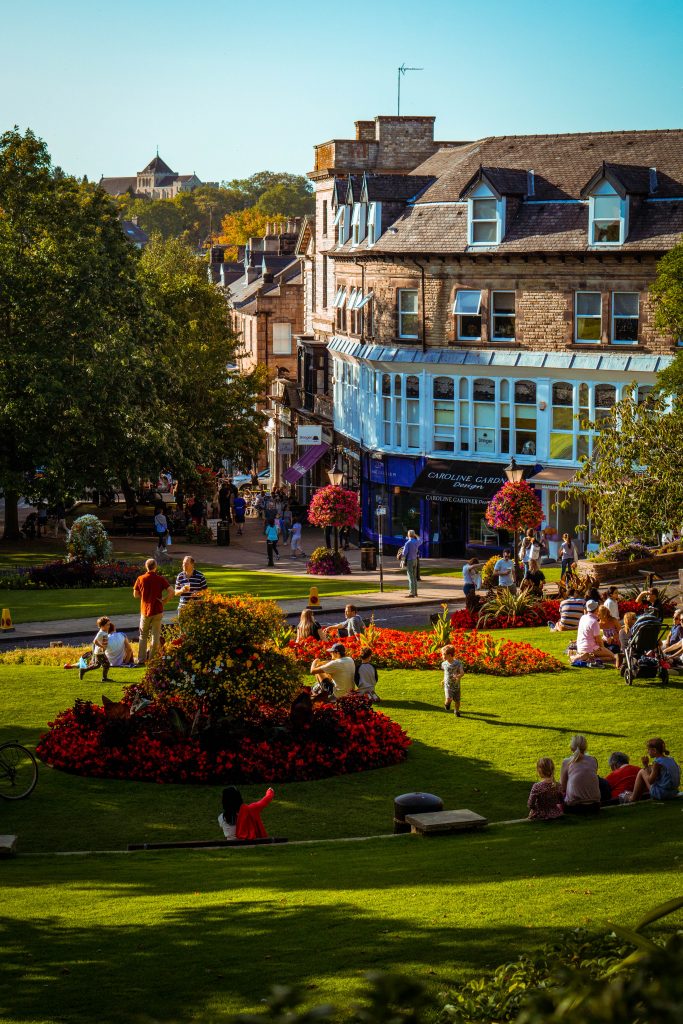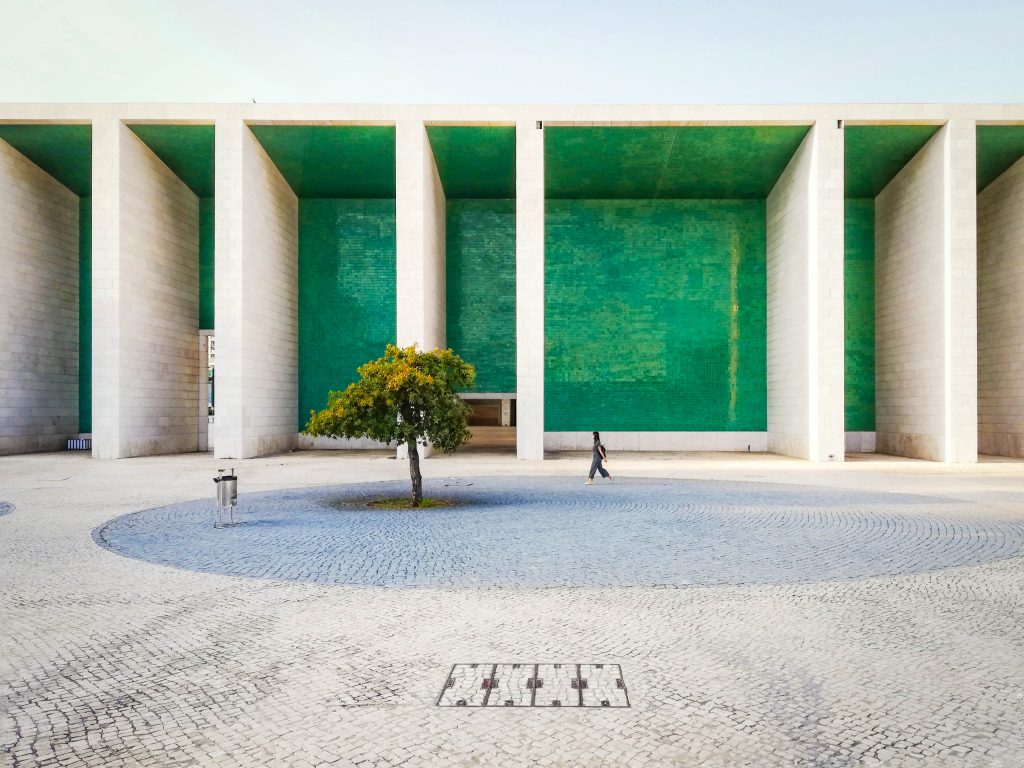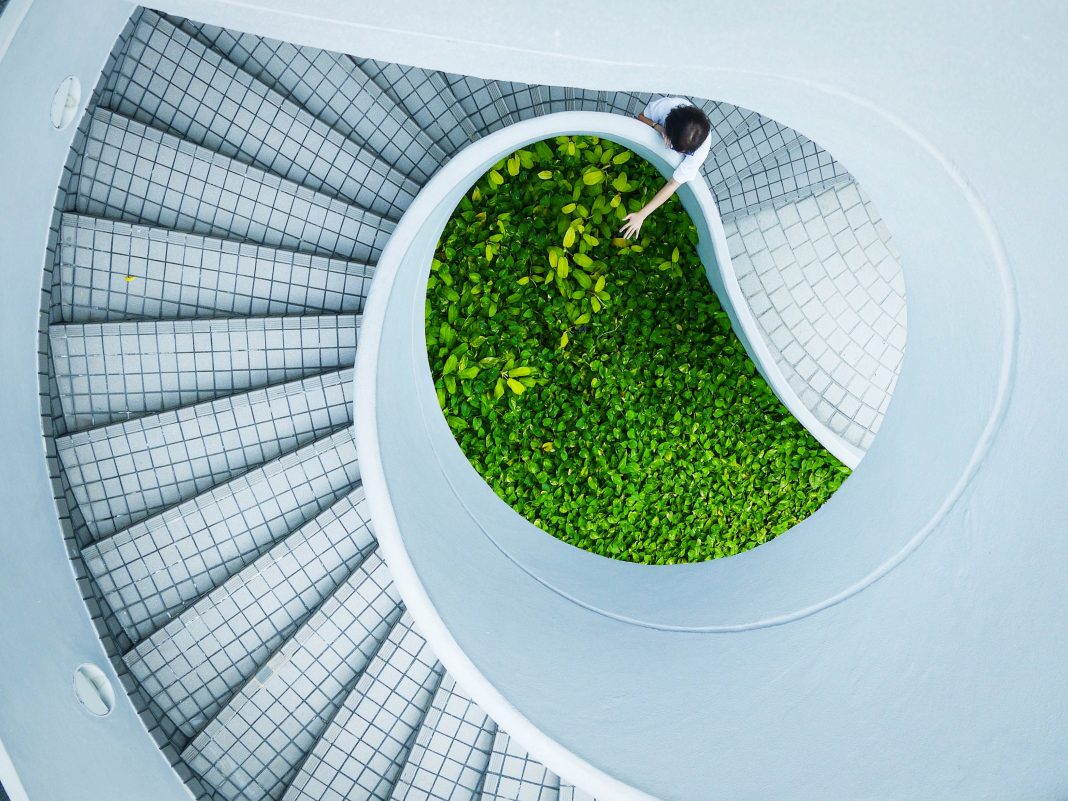According to the European Commission, we spend 90% of our lives in enclosed buildings. That’s quite a lot, considering how much vegetation and the outdoors positively affect us. So, why don’t we simply incorporate greenery into the place where we spend most of our time? Elizaveta Fakirova, an expert in the field of urbanisation, is here to explain the pains and gains of such a goal.

Elizaveta is an urban researcher and manager, and German Chancellor Fellow of 2020/21. Her work involves investigating the policies and strategies in Europe as a part of the Blue Green project towards the implementation of unconventional green infrastructure in cities as a local climate change mitigation tool.
Besides those, Elizaveta is also a Young Urbanist Network expert at All Things Urban – a community-based career platform for urban professionals working on city challenges worldwide. “It was created to bring urbanists with diverse backgrounds from across the world together, connect them with real-world projects, and help them share their experiences and cooperate,” says Elizaveta.
Without a doubt, she’s an expert in her field. We had the privilege to talk to her and get advice on a very important topic considering climate mitigation: how to incorporate greenery into architecture, and consequently make cities healthier, reduce the heat island effect, and overall, improve the quality of lives of the city’s residents. Following is what we’ve learned.
Requirements of Green Spaces in Cities
Let’s start with the basics. How much green space should there be in a city? According to Elizaveta, the World Health Organization (WHO) recommends for every urban citizen to be able to reach at least 0,5–1 hectares (ha) of green space within a 300-meter linear distance from their homes. “Close to this, the Green Space Standards in England recommend accessibility of natural greenspace of at least 20,000 m2 in no more than a 5-minute walk from home. In Vienna, these numbers are 3 to 5 m2 of public space per inhabitant of a housing project. However, for example in Mexico, there are no relevant recommendations at all. Nevertheless, the country is trying to push a 10-minute walk distance concept as part of the new urban agenda,” points out Elizaveta.
When it comes to the coverage of green spaces in urban settings, it depends on each city’s independent regulations. Oslo is the city with the highest percentage of public green areas in the world, green spaces cover 68% of the city. Moscow, Russia, also presents a high number – 54,5% and has a plan to raise it up to 61% by 2030. “Despite the fact that these figures are higher than the standard for comfortable living (16 m2 per person), some districts in Moscow, especially in the Central City Zone, are still struggling with a lack of greenery (1,86 m2 per person),” adds Elizaveta.
Ways to Connect Buildings with Vegetation

When it comes to connectivity, Elizaveta recommends integration. One example of such a method is a Kampung Admiralty project in Singapore, designed by WOHA Architects.
Kampung Admiralty was named World Building of the Year at the World Architecture Festival in 2018. The building is designed as a ‘vertical village’ and is organised in three layers:
- Lower level containing shops, eateries and access to a tropical garden.
- Middle floors contain a medical centre, studio apartments, and green spaces.
- The building’s top level/roof consists of a community park covered in local plants and built on a roofscape of staggered terraces.
“This mix architecture is an interesting example of bringing together public green spaces, residential units, and public services under one roof,” explains Elizaveta.
Don’t worry though, you don’t have to build a completely new building to properly incorporate vegetation – other methods do exist:
Green Facades
You can start by greening your building with ivy walls or vertical forests.
For example, Bosco Verticale in Milan is “a new format of architectural biodiversity which focuses not only on human beings but also on the relationship between humans and other living species.” The building’s facade regulates humidity, absorbs CO2 and microparticles, and produces oxygen, all in one.
Green facades are overall great, no question about it, however, they do need the right maintenance to survive. Plants need to be pruned, debris needs to be removed, inspection and repairs are a norm, and occasionally a replacement of beds or plants is required.
“Additionally, window gardens, green plants terraces and balconies can develop, accomplish and support a vertical greenery networking system,” adds Elizaveta.
Green Roofs
“The application of the green roof technology, both intensive and extensive, is a much-established and recognized worldwide practice,” says Elizaveta. Learn how to do it on your building here. However, not all buildings can support a green roof. If this is the case, Elizaveta recommends alternatives – a container or pocket gardening.
One example of such practice is Pocket Habitat, developed by Arup. It consists of environmentally friendly and 100% recyclable stand-alone bags, which can be placed together to create a carpet of vegetation.
Strategic Planning
When it comes to incorporating greenery into the city’s plan, there is no one-size-fits-all answer. It has to be adapted to specific situations: type of greenery, local problems that are going to be solved by this incorporation (e.g. biodiversity, flooding), governmental and tax systems, etc. Elizaveta advises incorporation through “developing and implementing specific land use, climate adaptation and mitigation, and sustainable construction policies via a mix of regulatory and incentive tools that are applicable for the chosen city zones.”
That being said, there is a recommended ‘structure’ you could follow if wanting to add vegetation into strategic planning.
And the Maintenance?
It depends on the type of greenery and the region. “Vegetation should be suitable for the local climate conditions, be supplied with nutrients, have properly distributed irrigation, and be pruned from time to time,” advises Elizaveta.
For example, the FLL Guidelines were established in 1990 to standardize the maintenance of green roofs. Though they were first established in Germany, they later became the basis for most European countries in the construction of green roofs.
Your Turn
Decided to green your building? Great! Elizaveta shares some pointers for doing it as smoothly as possible:
- Examine the roof or facade and evaluate its ability to withstand an additional load. Read our recommended guidelines for even more information.
- Develop a detailed plan of the desired greenery. Talk to an expert.
- Check local government financial programmes. For example, in Berlin, a programme, called ‘1000 Green Roofs’, was launched to bring nature to highly dense areas and it covers up to 75% of construction work costs and up to 50% of consulting and planning costs. Another example is Vienna’s recent government programme, offering funding for green installations and consultations: green roofs are funded with up to €20,200, facades with up to €5,200, and courtyard gardening with up to €3,200.

Challenges
Nothing is perfect; there will be ‘obstacles’ on your path. So, here’s a heads-up of what might be lying in wait.
Greening Existing Buildings
As Elizaveta points out, it’s quite challenging to find a way to green the already existing buildings as they were built without taking the additional load into account.
Limited Knowledge
“In implementing greenery, a lot of questions will be raised – technology, drainage, fire protection, maintenance, installation and so on. So, to avoid future risks, it is very important to contact proven experts who know how to do it,” suggests Elizaveta.
Costs
“It is necessary to initially budget not only the installation of green infrastructure, but also its continuing maintenance,” Elizaveta points out wisely. Check for local subsidies, otherwise greening can be costly.
Enclosed Landscape
“Nowadays the incorporation of greenery into architecture is certainly the mainstream, but this landscaping remains enclosed.”
Enclosed green spaces mean that citizens cannot truly experience the potential common good. Many rooftops are either closed off or offer limited access. Elizaveta calls out the lack of public rooftop projects built in recent years and calls upon other CityChangers to think together about the possible solutions.
Take-Aways for Incorporation
From green facades and green roofs to community parks in the buildings themselves, vegetation incorporation knows no limits, and imagination is set to roam free. If you’re planning to connect your building with a little bit of nature, first define what you want, do your research, talk to experts, apply for funding, and get it done. Many examples prove it doesn’t have to be a massive project in order to work. Simply by installing pocket gardens or ivy walls, you will have done something good not only for your well-being at home but for the city, climate, and other residents as well. Make the best use of that 90% of your life that you spend indoors.



[…] But what if we could bring more of that greenery and beauty into the places we inhabit every day? As expert Elizaveta Fakirova explains, the incorporation of vegetation into our architecture can have tremendous benefits for our health, […]
[…] The concept of incorporating greenery into the design of rooftops has gained popularity due to its potential positive impact on mental health and overall well-being. […]
[…] Metka Novak for CityChangers.com– […]
Awesome!